Alice Through the Looking Glass
 for fantasy action/peril and some language.
for fantasy action/peril and some language.
Reviewed by: Blake Wilson
CONTRIBUTOR
| Moral Rating: | Better than Average |
| Moviemaking Quality: |
|
| Primary Audience: | Kids Family |
| Genre: | Fantasy Family Adventure Sequel 3D IMAX |
| Length: | 1 hr. 53 min. |
| Year of Release: | 2016 |
| USA Release: |
May 27, 2016 (wide—3,700+ theaters) DVD: October 18, 2016 |
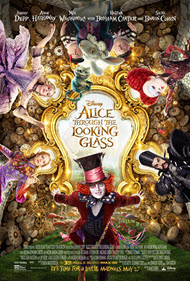

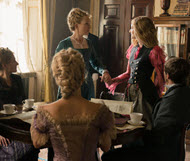
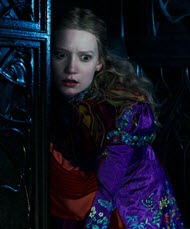
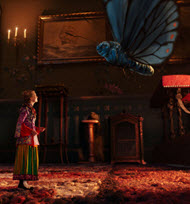
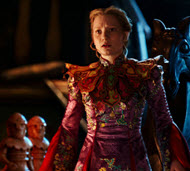
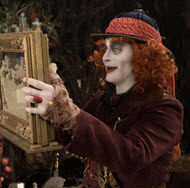
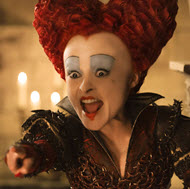


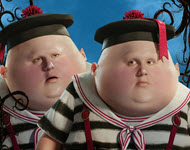
caterpillars in the Bible
| Featuring |
|---|
|
Johnny Depp … Mad Hatter Anne Hathaway … Mirana of Marmoreal, the White Queen Helena Bonham Carter … Iracebeth of Crims, the Red Queen Mia Wasikowska … Alice Kingsleigh Alan Rickman … Absolem, the Blue Caterpillar (voice) Richard Armitage … The King of Underland Sacha Baron Cohen … Time, a half-clockwork, half-human, omnipotent demigod Michael Sheen … Nivens McTwisp, the White Rabbit (voice) Andrew Scott … Addison Bennett Rhys Ifans … Zanik Hightopp, the Mad Hatter’s father Toby Jones … Wilkins (voice) Louis Ashbourne Serkis … Little Hatter Timothy Spall … Bayard, the Bloodhound (voice) Stephen Fry … Cheshire Cat (voice) See all » |
| Director |
| James Bobin — “Muppets Most Wanted” (2014), “The Muppets” (2011) |
| Producer |
|
Walt Disney Pictures Roth Films See all » |
| Distributor |
Other Alice films:
• “Alice in Wonderland” (2010)
• “Alice in Wonderland” (1951)
• “Phoebe in Wonderland” (2009)
3 years have passed since the events of “Alice in Wonderland,” and Alice Kingsleigh (Mia Wasikowska) is now the captain of the ship “The Wonder,” exploring the world. Upon her return to London, she hears that her Mom (Lindsay Duncan) has sold their family’s home to Hamish Ascot, the person Alice turned down a wedding proposal to (in the first film). Upon meeting with the company, Alice is asked to sell her father’s ship in order to regain the Kingsleigh home. As a result, Alice will be demoted to being a clerk. Alice’s mom believes that her daughter should get a job more fitting for a lady.
Feeling betrayed, in a quiet room, Alice finds Absolem the Butterfly (voiced by Alan Rickman in his final performance), who leads her through a mirror back to Underland. Alice is informed by her friends that the Mad Hatter is sick and slowly dying. Why? The Mad Hatter believes his family (that Alice even remembers him proclaiming as “dead”) is still alive, and the idea that no one believes him causes him to lose strength. After trying to speak to the Hatter, Alice learns there may be a way to save the Hatter’s family. She would have to go back in time, by consulting with Time (Sacha Baron Cohen) himself.
Filmmaking Quality
There is a lot to admire about this movie. Visually, it’s stunning. From Colleen Atwood’s costumes (she won an Oscar® for the first film’s costumes) to the production design (a town and forest with snow falling down is a major highlight), to the visual effects, the production team really worked hard to make a spectacular visual spectacle. Some visuals are more generic and less believable than others, but they are all fun to see.
As far as the story is concerned, while some critics have complained that there isn’t much of one, I have to disagree. This is a better-crafted story than the first film. “Alice in Wonderland” utilized a very generic and overused plot (“savior comes in to fulfill prophecy”), and didn’t really give us much of a chance to get to know or care about all of the unique characters. Here, screenwriter Linda Woolverton digs a little bit into these character’s lives and gives us sufficient backstories on what made these characters who they are. In this case, by the end of the film, I cared more about the characters this time.
There are a few script-related issues though. The script zips back and forth between plot points a little too quickly (the film does pace fast through its near 2-hour runtime). Even though she’s the titular character, Alice’s story takes a backseat to the other characters’ stories for the majority of the time she is in Underland.
Positive Messages
There are several great life lessons in this movie. Perhaps the most recognizable one is the importance of how we choose to use the time we have and the dangers of wasting time. In the movie, time is portrayed both as a friend and enemy. And Alice says that she learned, “With time, you give before you take.” It’s a reminder that we should think of time as a gift, rather than take it for granted. Hours, minutes, and even seconds matter. Ephesians 5 is a great illustration for this message:
Look carefully then how you walk, not as unwise but as wise, making the best use of the time, because the days are evil. Therefore do not be foolish, but understand what the will of the Lord is. (Ephesians 5:15-17)
The character Time has a great line, “You can’t change the past. But I daresay, you can learn from it.” While this lesson has been utilized before in films (“The Lion King” has a similar line), the film’s time-traveling theme gives the lesson more of a visual example. We are encouraged to learn from our mistakes and use what we’ve done in the past to help us live better lives, like it says in Deuteronomy 4:
Only give heed to yourself and keep your soul diligently, so that you do not forget the things which your eyes have seen and they do not depart from your heart all the days of your life; but make them known to your sons and your grandsons. (Deuteronomy 4:9)
We learn that the White Queen, Mirana (Anne Hathaway) and the Red Queen, Iracebeth (Helena Bonham Carter) had their relationship strained due to a lie Mirana told when they were children. Through this, the film warns that even a small sin can have major lifelong consequences.
Do not be deceived: God is not mocked, for whatever one sows, that will he also reap. (Galatians 6:7)
And, of course, lying is shown in a very negative light. There’s a tender reconciliation scene towards the end, where the White Queen admits her wrong and apologizes. Even better, the Red Queen reveals that all she wanted was an apology.
Alice also learns on her adventure that relationships should not take a backseat to her career. In the end, she makes a bold choice that results in her being able to keep her career, while having more time to spend with her mother in the process. The movie encourages us in our busy lives to always value the people in our lives.
The film repeatedly expresses the importance and necessity of a family. Hatter and his father (Rhys Ifans) are revealed to have had a major misunderstanding years ago. And before their untimely disappearance, the Hatter doesn’t want anything to do with his family anymore. Later on, the Hatter and his father eventually reconnect. In a touching moment at the end, the Hatter’s family still loves him, no matter what. The Hatter says, “Very important thing, a family. You need one.”
Finally, we are reminded not to judge others based on limitations. Alice is a great inspiration for having the willingness and courage to tackle things that other women (especially in the time period she lives in) typically didn’t try. The female empowerment angle might feel a little forced, but, it’s meant to show that Alice is more than what she is on the outside. And, at the same time, we are all more than what we seem.
Negative Content
Language: Despite a “some language” reason for the PG rating, there is hardly anything heard. The British interjection “bloody” is used twice (and one of those times it is used to describe the Red Queen in the same way Queen Mary was described in the 1500’s). The only other possibly objectionable interjection is “What the devil?” Mild name-calling includes “imbecile,” “idiot” and “stupid.”
Adult Content: A couple of female outfits are somewhat low-cut.
Violence: There are a handful of action scenes, but none are quite as dark or scary as the first “Alice…”. We do witness the Jaberwocky (a dragon that will probably frighten younger kids) breathe fire a couple of times and cause a bit of destruction. Characters and objects are swarmed and frozen by a red, rusting substance during one scene. A carrot nose is broken off. Someone takes a fall and hits her head. Someone and a flying machine crashes (no injuries). The Wonder and a few ships are nearly capsized by rough waters at the beginning. Music box characters reenact an executioner chopping off someone’s head. Alice is threatened in a mental institution, and stabs a doctor with a needle (off-screen). The Red Queen issues multiple, somewhat violent threats. Alice falls from ominous heights. Humpty Dumpty falls and breaks.
Drugs/Alcohol: Alice is nearly injected with an unknown medicinal drug (which she injects into the doctor in defense, knocking him unconscious). The “Alice…” stories have been suggested to be related to drug-related hallucinations, but none of that is suggested here.
Other: Time calls himself, “omniscient,” “immortal,” and “all that will ever be.” He also apparently has a say in when anyone dies, closing up a stopwatch when someone breathes their last breath. Someone lies. A family is kidnapped by someone as an act of “revenge.” Someone steals a precious object.
Conclusion
“Alice Through the Looking Glass” may feel a bit over-the-top and scattershot at times, and it’s not quite as magical as some of Disney’s catalog (in my opinion, “Enchanted” (2007) is the best of their live-action fairy tales), but it’s still immensely fun, entertaining, and surprisingly thoughtful. For those that enjoyed the first “Alice…”, they will find a lot to enjoy here. Those that are hoping for a more faithful adaptation of Lewis Carroll’s stories and characters, however, should keep their expectations low.
For families, parents will be happy to hear that the film isn’t quite as dark or scary as its predecessor. There are still a few scenes that might frighten younger children. But, any violence here is actually tamer than “The Chronicles of Narnia” and “Maleficent.” Besides that, there’s hardly anything else worth noting for parents to be concerned about.
Christians will also be happy to hear that the film exercises more restraint on the films’ more magical elements (the White Queen’s cooking in the first film, seen as a parallel for witchcraft by some, isn’t seen here). That isn’t to say magic is completely thrown out the window, but it’s much lighter and more “old school Disney” and “fairy godmother style” than anything else.
But, perhaps the best thing about “Through the Looking Glass” is several strong, positive and Biblical messages on display here. Sure, it’s a visual marvel worthy of being seen on the big screen, but it’s also a moral-filled tale that is, at times, both moving and inspiring.
ADDITIONAL NOTE: If any families decide to see the movie in theaters, they should be aware that a music video for Pink’s song (from the soundtrack) “Just Like Fire” appears just before the movie. The video features Pink in some low-cut costumes, and a few dark images that may prove to be a little much for younger children.
Violence: Moderate / Profanity: Minor / Sex/Nudity: Minor
See list of Relevant Issues—questions-and-answers.


Moral rating: Better than Average / Moviemaking quality: 4½
When they got home her dad went ballistic blaming her. Her brother was too scared to admit he did it. Her parents believed it for years and any time it was brought up my brother-in-law denied he ate the cookies, he thought it was funny. One family gathering when they were in their 30s he was drinking, and he asked my wife in front of his parents “remember when me and my buddies ate those cookies and mom and dad blamed you?”. You could honestly see the anger at him and hurt in their eyes that they had thought for 20 years that she had done it. As always honesty is the best policy. Better to tell the truth and suffer the consequences now as to effect the future,
Moral rating: Excellent! / Moviemaking quality: 5
Moral rating: Offensive / Moviemaking quality: 4½
Moral rating: Good / Moviemaking quality: 4
PLEASE share your observations and insights to be posted here.
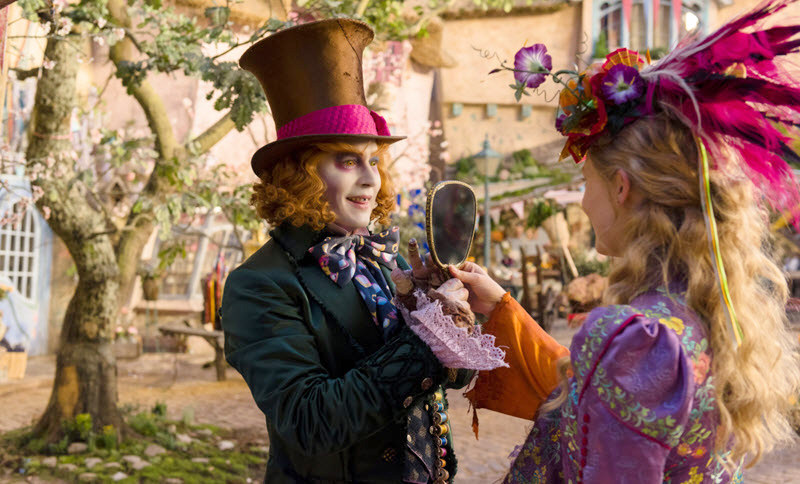

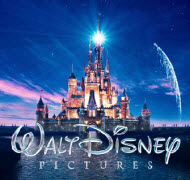
My Ratings: Moral rating: Better than Average / Moviemaking quality: 4